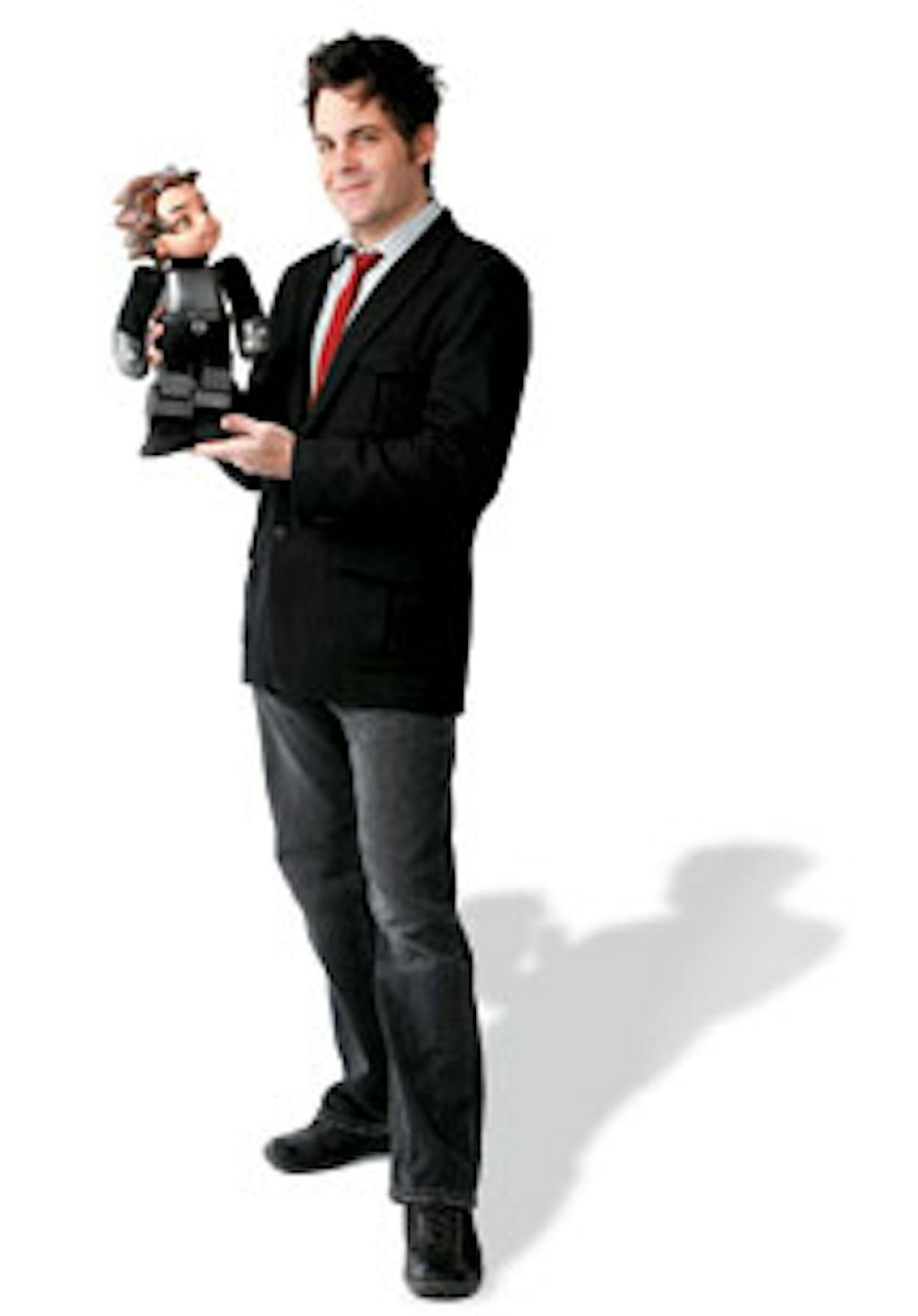NAME: David Hanson | AGE: 38 | HOMETOWN: Dallas | QUALIFICATIONS: Founder and chief scientist of Hanson Robotics, in Richardson, which designs human-looking robots / Inventor of Frubber, a lifelike robotic skin / Will launch his first commercial line of personal robots in 2009
• Artificial intelligence is all around us— in cars, in telephones, in vacuum cleaners, in toys, even in Google—but right now it’s mostly behind-the-scenes software used in narrow ways. Yet as computers become more powerful, the more they can integrate these software processes and the smarter they get. We have to plan for the day when they become our intellectual peers.
• Most of the robot funding right now is in the military sector. There’s a lot of investment in machines for warfare operations—robots that are ruthless and functional. But you don’t want robots that just pull a gun; you want robots that can talk a situation down and be diplomats.
• Remember HAL, the creepy robot in 2001: A Space Odyssey with that disturbing voice and single eye? Or the robots in the Terminator movies? I’m focused on creating machines that can engage socially. We want robots with benevolent artificial intelligence—friendly, not destructive.
• I made my first humanlike robots as an undergrad at the Rhode Island School of Design. Later I studied Gray’s Anatomy and the works of psychologists like Paul Ekman to learn about facial muscles and expressions.
• In 2005 I designed a robot to look like Albert Einstein. He was a real breakthrough. He could move his head and express a full range of human emotions. He was four and a half feet tall and 132 pounds, and he could talk at normal speed. We basically created a personality based on Einstein’s life. He could walk, dance, and even do tai chi. We could have had him teach physics! We showed Albert all over the world, from the Asia-Pacific Economic Cooperation summit to Good Morning America.
• Someday we’ll have robotic characters living in our homes. They will tutor our kids, entertain our elderly parents, repeat the latest news and celebrity gossip, and act as personal assistants, reminding us of where we’re supposed to be and what our deadlines are. They will be seamlessly integrated into our civilization.
• So far, the robots I’ve made are pricey: One can cost $130,000. But next year we’ll be marketing one for less than $300. We’re calling it Zeno. It looks like a classic cartoon-character robot. It can recognize your face, understand your speech, and walk around a room. It will be wirelessly controlled by personal computer, to receive new content and constant software upgrades. So your robot will keep getting smarter and smarter.
• As AI evolves, it will develop a sense of friendship toward the human race. Because that’s what consumers will want: robots that inspire and exhibit love. And you can’t just fake that; at some point the robot will have to have an actual system of compassion built in. It’ll have to understand what you’re feeling—and care.









